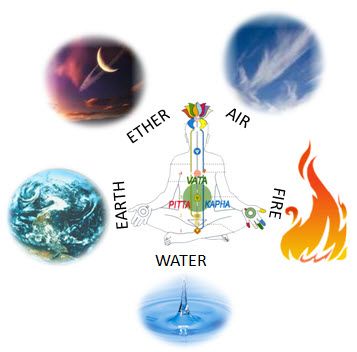Principles of Ayurveda: Incredible That Transform Your Life Positively
Ayurveda, the ancient Indian system of medicine, is not just a way of healing but a philosophy of life. It emphasizes balance, harmony, and holistic well-being, connecting the mind, body, and spirit. Its principles, deeply rooted in natural laws, guide millions even today toward healthier, more balanced living. In this article, we explore the principles of Ayurveda, its history, facts, significance, daily life impact, FAQs, and why it remains essential in modern society.
- History of Ayurveda
- Core Principles of Ayurveda
- 1. The Tridosha Theory
- 2. The Seven Dhatus
- 3. Agni (Digestive Fire)
- 4. Prakriti (Body Constitution)
- 5. Ojas (Vital Energy)
- 6. Srotas (Body Channels)
- 7. Dinacharya and Ritucharya (Daily and Seasonal Regimens)
- Timeline of Ayurveda
- Facts About Ayurveda
- FAQs About Ayurveda
- Significance of Ayurveda
- Daily Life Impacts of Ayurveda
- Observance and Rituals
- Wishing and Benefits
- Review Section
- Conclusion
History of Ayurveda
Ayurveda, derived from the Sanskrit words “Ayur” (life) and “Veda” (knowledge), literally means “the knowledge of life.” Its origins date back more than 5,000 years, making it one of the oldest holistic healing systems in the world. Rooted in the Vedic culture, Ayurveda was traditionally passed down orally and later documented in ancient texts such as:
Charaka Samhita: Focuses on internal medicine (Ayurveda’s core medical principles).
Sushruta Samhita: Known for surgical techniques and anatomy.
Ashtanga Hridayam: A comprehensive compilation of Ayurvedic knowledge.
Historically, Ayurveda was not only a medical practice but also a lifestyle guide, emphasizing diet, mental well-being, daily routines, and seasonal adjustments. It was designed to prevent illness and enhance longevity, a principle that resonates even in modern wellness practices.
Core Principles of Ayurveda
Ayurveda is founded on several key principles that guide its practices:
1. The Tridosha Theory
Ayurveda identifies three fundamental energies (doshas) that govern the body and mind:
Vata (Air and Space): Controls movement, breathing, and circulation.
Pitta (Fire and Water): Regulates metabolism, digestion, and body temperature.
Kapha (Earth and Water): Provides structure, stability, and immunity.
Every individual has a unique combination of these doshas, called Prakriti, which determines physical, mental, and emotional characteristics. Imbalances in doshas lead to disease.
2. The Seven Dhatus
Dhatus are the seven tissues that sustain the body:
Rasa (plasma)
Rakta (blood)
Mamsa (muscle)
Meda (fat)
Asthi (bone)
Majja (marrow & nerves)
Shukra (reproductive tissue)
Maintaining their balance ensures proper functioning and overall health.
3. Agni (Digestive Fire)
Agni represents the digestive and metabolic fire. Proper Agni ensures:
Efficient digestion
Absorption of nutrients
Elimination of toxins
Weak or irregular Agni can lead to digestive disorders and systemic imbalances.
4. Prakriti (Body Constitution)
Prakriti defines an individual’s physical, mental, and emotional traits. Recognizing your Prakriti helps in adopting a lifestyle, diet, and treatment plan aligned with your natural constitution.
5. Ojas (Vital Energy)
Ojas is the essence of vitality, immunity, and overall well-being. A person with strong Ojas is physically healthy, mentally stable, and emotionally resilient.
6. Srotas (Body Channels)
Srotas are channels in the body that transport nutrients, energy, and waste. Ayurveda emphasizes keeping these channels clean to maintain optimal health.
7. Dinacharya and Ritucharya (Daily and Seasonal Regimens)
Ayurveda recommends daily routines (Dinacharya) and seasonal routines (Ritucharya) to align with natural cycles. These include:
Waking up early
Oil massage (Abhyanga)
Meditation and yoga
Seasonal dietary adjustments
Timeline of Ayurveda
~5000 BCE: Origins during Vedic period
1500–500 BCE: Charaka Samhita and Sushruta Samhita compiled
500–1000 CE: Ayurveda spreads to Southeast Asia
1200–1600 CE: Integration with Persian and Unani medicine
19th Century: Ayurveda faces decline due to Western medicine
20th Century: Revival through Indian independence movement
21st Century: Global adoption in holistic and integrative health
Facts About Ayurveda
Ayurveda is recognized by the World Health Organization (WHO) as a traditional medicine system.
It focuses on prevention rather than just curing diseases.
Ayurvedic medicines are primarily herbal and natural.
Yoga, meditation, and lifestyle management are integral parts of Ayurveda.
Ayurvedic practices can be adapted for modern life while maintaining authenticity.
FAQs About Ayurveda
Q1: Is Ayurveda safe for everyone?
A1: Generally, yes, but it is important to consult a certified practitioner, especially for chronic conditions.
Q2: How long does it take to see results from Ayurvedic treatments?
A2: Results vary depending on the individual and the condition but usually require consistent practice and lifestyle changes.
Q3: Can Ayurveda cure modern diseases like diabetes and hypertension?
A3: Ayurveda focuses on balancing body systems and can complement conventional treatment, but medical supervision is essential.
Q4: Are Ayurvedic medicines natural?
A4: Most are plant-based, but purity and sourcing are crucial for effectiveness.
Q5: How can I find my dosha?
A5: A qualified Ayurvedic practitioner can assess your dosha through physical examination and lifestyle assessment.
Significance of Ayurveda
Ayurveda’s significance extends beyond physical health. Its holistic approach improves:
Mental health: Reduces stress, anxiety, and depression
Emotional well-being: Promotes emotional balance and resilience
Spiritual growth: Encourages self-awareness and inner harmony
Societal impact: Advocates sustainable use of natural resources and traditional knowledge
Daily Life Impacts of Ayurveda
Balanced diet: Eating according to dosha improves digestion and energy.
Proper sleep: Sleep hygiene and natural rhythms enhance productivity.
Exercise and Yoga: Strengthens the body and mental clarity.
Stress management: Meditation and Pranayama reduce anxiety.
Preventive care: Seasonal cleansing and detox prevent diseases.
Observance and Rituals
Ayurvedic consultations: Regular check-ups for dosha balance.
Seasonal detox (Panchakarma): Cleanses toxins and restores balance.
Yoga and Pranayama sessions: Daily practice enhances mind-body harmony.
Herbal remedies: Incorporating herbs like Ashwagandha, Tulsi, and Turmeric in daily life.
Wishing and Benefits
Wishing someone wellness through Ayurveda can be as simple as encouraging a balanced lifestyle:
“May your mind, body, and spirit remain balanced and healthy with the wisdom of Ayurveda.”
The benefits extend to:
Long-term health
Mental clarity
Emotional resilience
Stronger immunity
Harmonious lifestyle
Review Section
User Reviews of Ayurveda Practices:
Anjali, 34: “Ayurveda transformed my digestion and energy levels within months. Daily routines like oil massage and herbal teas made a noticeable difference.”
Rohit, 42: “Initially skeptical, but balancing my Pitta dosha helped control my stress and anger levels. Holistic care works wonders!”
Meera, 29: “Ayurveda taught me preventive care. I feel healthier and more aware of my body than ever before.”
Rating: ★★★★☆ (4.7/5)
Conclusion
Ayurveda is more than medicine—it is a way of life. Its principles guide individuals toward harmony, longevity, and holistic well-being. By understanding doshas, following daily and seasonal routines, and embracing a balanced lifestyle, one can experience profound physical, mental, and spiritual health. In today’s fast-paced world, Ayurveda offers a timeless, natural, and human-friendly approach to living healthier, happier, and more balanced lives.
Whether you are seeking to improve your digestion, immunity, mental clarity, or emotional balance, Ayurveda provides practical, science-backed wisdom that transcends time. By embracing these ancient principles, you are investing not only in your health but also in the well-being of society through sustainable and mindful living.









certainly like your web-site however you need to take a look at the spelling on quite a few of your posts. Several of them are rife with spelling issues and I to find it very bothersome to tell the truth nevertheless I’ll definitely come again again.
Usually I do not read post on blogs, but I would like to say that this write-up very forced me to check out and do it! Your writing taste has been amazed me. Thank you, quite nice post.
This blog is definitely rather handy since I’m at the moment creating an internet floral website – although I am only starting out therefore it’s really fairly small, nothing like this site. Can link to a few of the posts here as they are quite. Thanks much. Zoey Olsen